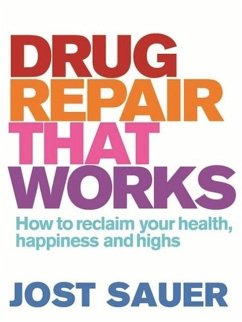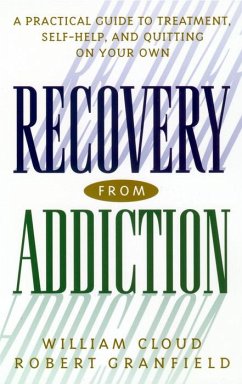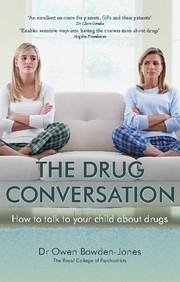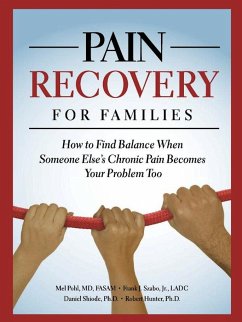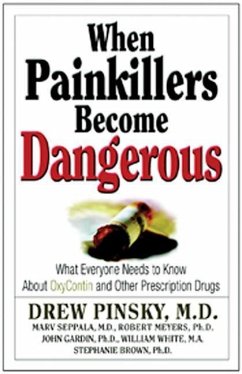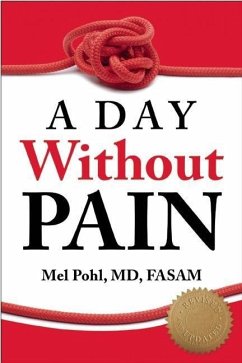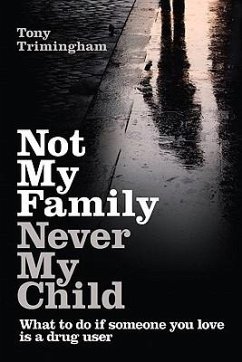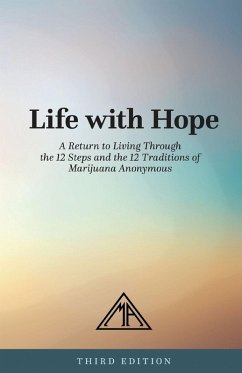
Overcoming Prescription Drug Addiction
A Guide to Coping and Understanding

PAYBACK Punkte
8 °P sammeln!
An exploration of one of the nation's most serious drug problems today: Prescription drug addiction is now one of the nations most serious drug problems. More Americans are abusing controlled prescription drugs more than cocaine, hallucinogens, inhalants, and heroin combined. With the exception of marijuana, prescription painkillers are the most widely abused drug in the U.S. Many who are addicted to prescription drugs are unwitting addicts -- they have no history of drug abuse, but become addicted after taking a drug for legitimate reasons. Rod Colvin understands this problem. His 35-year old...
An exploration of one of the nation's most serious drug problems today: Prescription drug addiction is now one of the nations most serious drug problems. More Americans are abusing controlled prescription drugs more than cocaine, hallucinogens, inhalants, and heroin combined. With the exception of marijuana, prescription painkillers are the most widely abused drug in the U.S. Many who are addicted to prescription drugs are unwitting addicts -- they have no history of drug abuse, but become addicted after taking a drug for legitimate reasons. Rod Colvin understands this problem. His 35-year old brother died as a result of his long-term addiction to painkillers and tranquilizers. Drawing from his personal experience and his background as a counselor, Colvin offers help to those suffering from addiction as well as their families. In this new, third edition, Colvin discusses dynamics of addiction and the newest treatment options; he also offers compelling personal stories from addicts who describe their journeys into recovery. These anecdotes are accompanied by advice from addiction medicine specialists. The book answers these questions: How does addiction rewire the brain? What are the symptoms of addiction? Whos at risk for addiction? Why are more teens abusing prescription drugs? When does proper medical use of a drug turn into addiction? What happens if the drugs are stopped abruptly?· What are the symptoms of withdrawal? What is the difference between addiction and physical dependence? What are the top 20 most-abused prescription drugs? How Can You Leave Prescription Drugs Behind? Read stories of recovery from individuals who are in recovery; Learn how they become addicted· Find out how they made it into recovery· What were the turning points in their lives that made them seek recovery? What is their advice to others who are struggling? Treatment for Addiction; What are the treatment options? What is a medical detox? What is in-patient treatment? What is out-patient treatment? What is a partial-day treatment plan? What is rapid detox for opiate addiction? Does insurance pay for treatment? What is relapse prevention education? How Can Family Members Ease Their Pain? Addiction affects everyone in the family. No one escapes the pain and the chaos; What can family members do to help the addict and themselves? What does it mean to enable an addict? Find out if youre enabling a loved one whos addicted; What is a family intervention? How can you set up an intervention to get your loved one into treatment? Understand that addiction is a progressive disease; Advice from Addiction Medicine Specialists; Read the advice of addiction medicine specialists. Their topics: Addiction is an illness; How to build on hope; Be cautious with benzodiazepines; Stages of chemical dependency; Addiction to pills means greater denial; Addicts are not having fun; Warning signs of addiction; How to avoid isolating, a trigger for relapse; Getting Pills to Feed an Addiction; Did you ever wonder how an addict can obtain so many prescriptions? This chapter tells you. It discusses: Doctor shopping; Why doctors often misprescribe; Why forged prescriptions get filled; Ordering drugs from the Internet; Do You Have Chronic Pain? Twenty percent of Americans have chronic pain; How do you avoid addiction if you need pain pills for chronic pain? This chapter answers questions such as:· Why is most pain under-treated? Does pain treatment lead to addiction? What percentage of people become addicted? Why are so many doctors under-trained in pain management? What are the barriers to effective pain management? Elders and Drug Abuse and Addiction.




